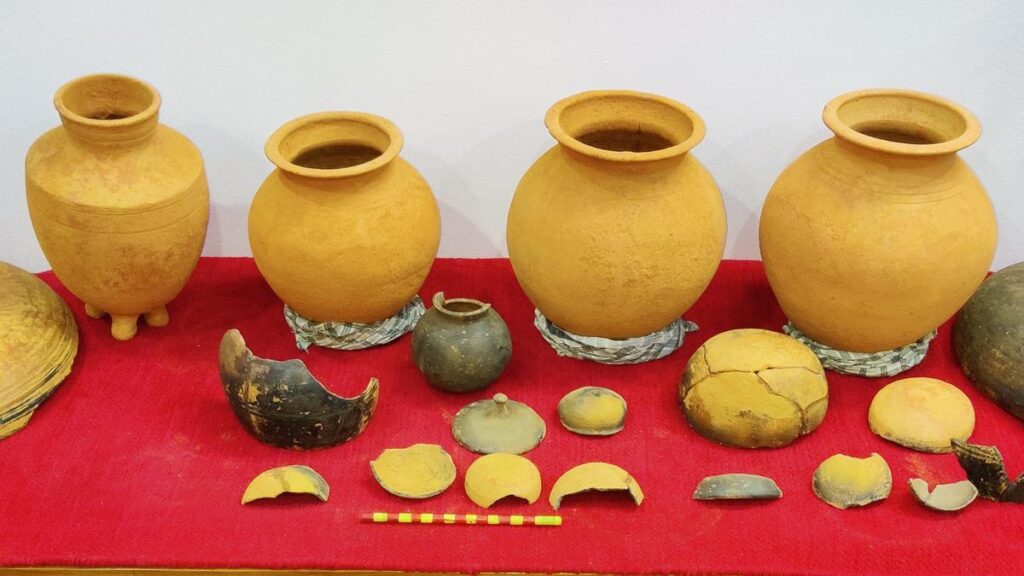The cave was found accidentally while levelling the land for plantation purpose.

The study of potteries, which were found in a cave at Kallembi village under Yadamangala gram panchayat, Kadaba taluk in Dakshina Kannada some time ago, indicated that the cave could be that of the iron age-Megalithic period, according to T. Murugeshi, Associate Professor in Ancient History and Archaeology, Mulki Sundarram Shetty College, Shirva, Udupi district.
“They resembled grave potteries of Mudukonaje near Moodbidri, and burial potteries of Heggadehalli and Siddalingapura of Kodagu. In addition, they were more akin to the Kerala Megalithic burials in construction and style. But side opening and underground passage with top opening, which is a common feature of Kerala burials, are not traced. It will be known by excavation only,” he said in a statement.
Mr. Murugeshi said that the small particles of husk, most probably of ragi, found inside surface of red potteries were carefully collected, and they will be sent to a laboratory for further studies.
He said that one-legged red jar of about 10 inch in height, large red lid of about 7.5 inch in diameter, another large black lid of about 8.5 inch in diameter, three red potteries of about 19 cm, 22 cm and 23.5 cm in height respectively, one small black pot of about 9 cm in height having small mouth of about 2 cm, one small red lid with knob, and black and red bowl pieces with flat bottom, lamps of red and black colour with round base were collected from the site.
Accidental find
The cave was found accidentally while levelling the land for plantation purpose. The site is located on the slope of a small hillock and watered by Kumaradhara river. It is about 16 km away from Yadamangala and just 1.5 km away from Dola. The cave was opened on eastern side by an earthmover, the historian said.
“It looks like a hemispherical dome having a central pillar. Pottery base impressions are visible on the inside surface of the cave. A heap of soil on either side of the pillar was found. Without clearing the debris proper study is difficult, and rain is also an obstacle to continue the examination. There was no trace of metals inside the cave,” he said.
According to the land (site) owner, Vishwanath Gowda Balladka, the cave was found in the afternoon on August 19, 2022. The materials were collected after conducting ‘panchaname’ in the presence of the village accountant. The study team led by Mr. Murugeshi had reached the site on August 21 after the he was informed about the finding of the cave on the evening of August 20.
Adjoining areas of Kallembi like Dola, Yenmakaje, and others are well known in the Tulu folklore, belonging to twin heroes of Tulu Nadu Koti and Chennaya and their sister Kinnidaru, he said.
source: http://www.thehindu.com / The Hindu / Home> News> Cities> Mangaluru / by The Hindu Bureau / November 08th, 2022

